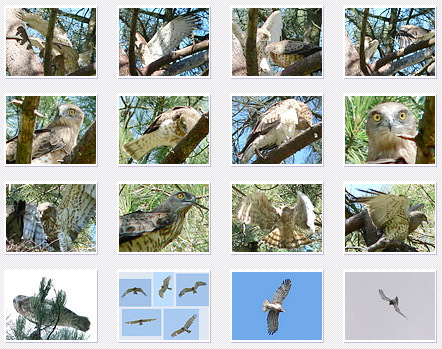Country: France. Region: South Auvergne. Department: Haute-Loire.
Short-toed Eagle population: 75 / 80 pairs.
Please take a look at the map of main survey area /map/. General description and photos can be viewed below:
15 pairs are surveyed since 1996 in the west of department, on the slopes of the huge hercynian massif of Margeride. Very few human activities in valleys. None intensive agricultural practices on the boarding plateaux (cattle: cow, sheep). Birds nest in V-shaped valleys of the Allier and tributaries, between 700 and 950 m above sea level. Eyries generally on pines, sometimes on firs. Usually nest areas are quiet.
Diet is based on few species: Elaphe longissima (chiefly), Vipera aspis (often), Anguis fragilis (especially during cool and rainy periods), sometimes Coronella. Lizards: Lacerta viridis and Podarcis muralis.
Site 1. Breeding site: Nest on the left of the valley (yellow circle), on a pine. Other nests on the other side (green circle: fir now dead because of Ips and al.), and at the end of a valley’s branch (orange circle).
Altitude: 870 m. Exposition: SW. Breeding success rate: 0.66 (n=12).
Site 2. Breeding site: 2008’s is nest in yellow circle. On the border of an oakwood and a pinewood. Nest on a pine. Two other eyries are known, one of which in the green circle, in the concavity of the mountain.
Altitude: 760 m. Exposition: SSE. Breeding success rate: 0.45 (n=11). Bad rate because site at the crossroad of flight paths of other birds, for hunting areas.
Contribute your materials | Biotopes Map





























